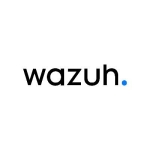Every day, I log into Microsoft Sentinel to check the logs. I start by checking the incidents and analyzing them. If I need to create an automatic rule, I do so. If the logic needs to be changed, I make the necessary adjustments. I am responsible for managing Microsoft Sentinel for our organization.
For our organization, Microsoft Sentinel helps us prioritize threats across most of our environment because we have not yet fully integrated the solution into all aspects of our operations. Currently, we are working on integrating mutual source AWS into Sentinel, which will provide us with more visibility. Apart from that, there is already a lot of visibility in case of any failures or anyone attempting large deployments across other companies or similar activities. Additionally, if someone attempts to use login information from a different location, it becomes apparent, as it is impossible to travel that quickly. Sentinel covers almost everything.
We are using Microsoft Office 365 for email security in our environment. Our infrastructure engineers have integrated Microsoft Office 365 with Sentinel. When we view the old connectors in the application, it mentions Microsoft Office 365. Currently, it also indicates this in terms of firmware.
Microsoft Sentinel can enable us to ingest data from our entire ecosystem. However, since we are currently receiving services from an external source, we are not integrating the tool right now. That's why we are looking for another tool that we can integrate with Microsoft Sentinel. Once we do that, I believe we will be able to see everything, including any malware-related issues, as well as other security and licensing concerns.
The ingestion of data into our security operations is of utmost importance. If we are not monitoring whether people are sending large documents to other companies, how will we realize it? We don't have any other tool for that. Of course, we have email security and EDR, which cover some aspects, but some of them are not effective or are too basic. Unlike them, Microsoft Sentinel is comprehensive. It records everything: every click, download, login, and search. Therefore, it is a necessary tool for our operations.
Microsoft Sentinel allows us to investigate threats and respond quickly from a unified dashboard. A couple of months ago, there was a concern with the AWS environment, and our director asked us to identify any relevant code-related alerts originating from the environment. Since we didn't have the rules at that time, I looked into the recommended analytics section, which turned out to be quite straightforward. When we write Python or work with any logs, cells, or Java-related elements, Microsoft Sentinel provides us with insights and a logical approach to integrating our environment. During my investigation, I discovered some configurations related to the Python code, and it appears to be functioning well now.
Microsoft Sentinel's built-in SOAR, UEBA, and threat intelligence capabilities work well and are further enhanced with the addition of a firewall for added protection.
Before our organization implemented Microsoft Sentinel, we only had an email security DLP solution and some other tools. While we could see the logs on our computer, they were often presented in a confusing manner, appearing like gibberish to us. However, with the introduction of Sentinel, we can now interpret and make sense of that information.
When I joined the organization, they were already in the process of implementing Microsoft Sentinel. However, I am familiar with other integrations with Sentinel, such as AWS, and the integration is not difficult. We simply create the necessary resources, and everything is well-documented, which is a huge plus. We can access all the information online, both in the AWS part and in Microsoft Sentinel. So, I believe it's not rocket science.
It helps automate routine tasks and aids in identifying high-value alerts. We have automated the tool to receive critical or high alerts and send us messages accordingly. This automation is currently active. Whenever a high alert is generated, it comes through direct messages. Even during non-working hours, I receive these alerts on my phone immediately. If it's an important alert, I can respond promptly. We had an incident where I had to work on weekends due to such an alert. However, if I'm not using the tool or haven't activated it, I generally don't turn on the computer after work hours. So, this feature has been beneficial for us. Some months ago, there was a Microsoft bug that created false positive alerts for every clean link, including company links. We made modifications to the alerts, and now we no longer receive those unnecessary alerts.
It helps eliminate the need to look at multiple dashboards by providing us with just one XDR dashboard. We no longer have to go to other places. However, there are instances when we receive alerts about failing servers, and we can't check them using Sentinel; instead, we have to use Azure Active Directory. It's not Sentinel's fault, and checking through Azure Active Directory is not difficult, but we still have to go somewhere else.
Sentinel's threat intelligence assists us in preparing for potential threats before they strike, allowing us to take necessary precautions. My weekly routine includes dedicating at least two hours to the accounting part. I am constantly searching for any threats in our environment that may have gone unnoticed. So far, I haven't found anything, but I'm always vigilant because we can never be entirely certain that there are no threats.
We have been enabled to save a significant amount of time. The log files consist of hundreds of pages, and to review them, we need to possess networking knowledge to identify the specific case. Without knowing what we are searching for, it's like trying to find a needle in a haystack. Sentinel migrates the logs and presents the visual information in a user-friendly manner, which has proven to be a time-saving solution for us.
Sentinel saves money by reducing the number of people required to monitor the alerts. For example, if there are normally 50 alerts per week, fine-tuning reduces them to just one.
Microsoft Sentinel helps decrease our time to detect and time to resolve. Sentinel provides a brief introduction to the events occurring in the environment when someone is causing instability in the AWS environment. Sentinel precisely identifies the issue and offers a link for accessing more information about the situation.
The dashboard that allows me to view all the incidents is the most valuable feature. Threat hunting is also valuable. Sentinel has a Microsoft framework, so we can experiment with numerous queries. There are almost 500 queries available that we can utilize based on our environment.
I believe one of the challenges I encountered was the absence of live training sessions, even with the option to pay for them. Microsoft insists that all information is available in the documentation, which I must admit is quite comprehensive and helpful. However, for someone without a coding background, learning solely from the documents can be challenging at times. It would be much easier to learn if there were practical exercises and instructional videos available. This aspect bothered me significantly. While I did come across a course, my preference was to access it through Sentinel since they are already providing us with their services. Having the team trained up would undoubtedly streamline my job and save a considerable amount of time.
Microsoft Sentinel is scalable. We can add as many services as we want, and Microsoft automatically increases the capacity by adding memory and storage.
I have used technical support many times. Sometimes, I have a really hard time understanding them. I am not sure if they are calling from India, but there was background noise at times. However, they are really helpful, even though they seem a bit indifferent. They frequently inquire whether we have addressed the issue and if it has been resolved—quite a lot, actually.
In a company, we are often very busy. They expect us to address the issues immediately, but sometimes it can take months. So, I inform them that I will follow up. They can be a little pushy, which is understandable from their perspective, but for us, it can be challenging because we have many other tasks to handle. Sentinel is just one of my priorities, and there are a lot of other things I need to take care of. That's why sometimes we need time, but to their credit, they are always responsive. Whenever we ask them a question, they promptly provide a response.
I had previously used Kibana, which is quite different from Microsoft Sentinel. When I used Microsoft Sentinel for the first time, I realized that this was the ideal solution. Microsoft Sentinel is user-friendly, unlike Kibana, which I found difficult to install and not very user-friendly. Microsoft Sentinel, on the other hand, is incredibly user-friendly, making it easy for everyone to understand and learn how to use it. It is a straightforward solution to comprehend.
I give Microsoft Sentinel a nine out of ten.
We are currently evaluating Microsoft Defender and CrowdStrike in our environment to determine which one is a better fit. As for Defender, I cannot claim to have a complete understanding of it since it's in a testing environment. I can monitor people's devices, but I have not yet received any alerts generated by the devices. It has only been around ten days.
I am responsible for creating documentation for all of our implementations, while other teams handle the infrastructure portion.
Maintenance is minimal for Microsoft Sentinel. There is a check button in the house. Sometimes I go there because we occasionally find that some things are not working properly. So we have to go there and address the issue, but it is not a common occurrence. Maybe it happens, like, three times a year which is not bad.
















